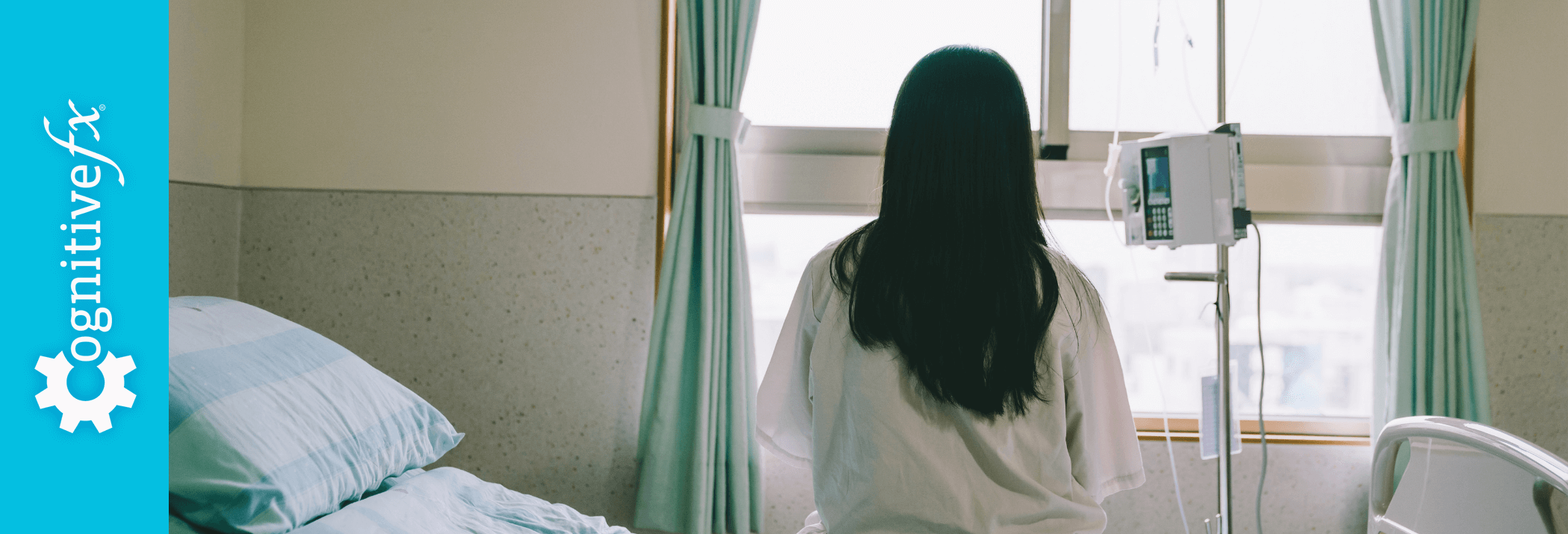Brain injury recovery is hard. The severity of your injury, which parts of your brain were affected, and how they were affected, all factor into things such as how much you can recover and how long it will take.
In this post, we explain what to expect during recovery and what you can do to keep improving for three types of brain injury:
If you already have a head injury diagnosis and know which group you fall under, click the appropriate link to skip to that section. If not, here is a quick introduction to each type of injury.
The most common causes of mild, moderate, and severe TBI are falls, being hit by or hitting your head against an object, motor-vehicle accidents, and self-harm, according to the Centers for Disease Control and Prevention (CDC).
These injuries typically involve blunt trauma to the head, although whiplash can cause a concussion, too. A whiplash concussion occurs when your brain hits your skull (instead of being impacted by some other object).
“Non-traumatic” brain injuries are so-called because they don’t involve force. However, they are still very traumatic to experience. While there are some exceptions, most non-traumatic brain injuries are hypoxic (partial deprivation of oxygen to the brain) or anoxic (complete deprivation of oxygen to the brain). This type of injury is caused by events or illness such as stroke, transient ischemic attack (TIA), carbon monoxide poisoning, viral or bacterial infection, drowning, tumors, fever, and more.
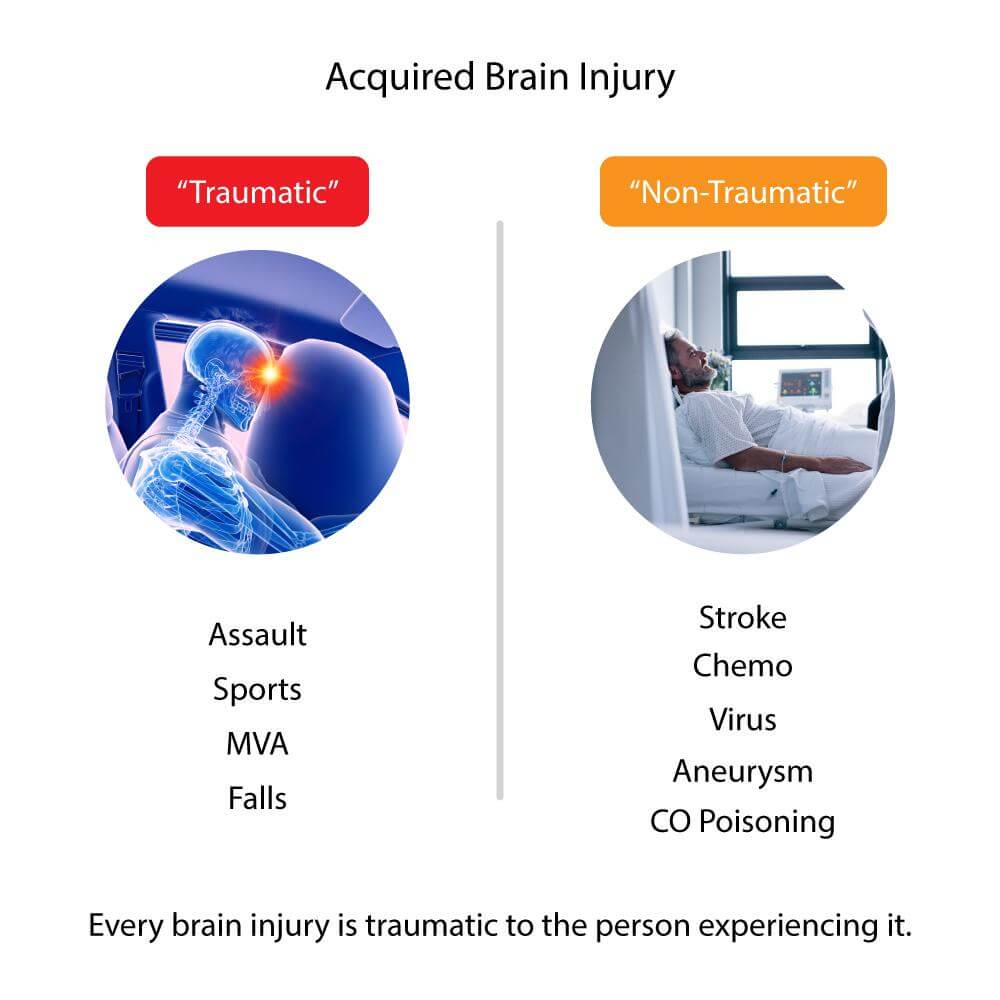
Each injury type has different recovery timelines and treatment options. In each section of this post, we explain:
- How long recovery usually takes.
- Whether that injury type can cause permanent brain damage.
- What to expect during recovery.
At the end, we also discuss treatment for persistent symptoms. This is because some patients still have long-lasting symptoms after moving through the healthcare system’s standard approach.
For example, up to 30% of concussion patients still have symptoms such as headaches, emotional changes, and brain fog months and years after their injury, a condition known as post-concussion syndrome.
Resolving those lingering symptoms can be life changing for the patient, but many doctors either ignore them or don’t know how to treat them.
At our clinic, we treat hundreds of brain injury patients who have been suffering from persistent symptoms. While the majority of our patients suffered a concussion, we’ve also treated survivors of severe TBI, carbon monoxide poisoning, transient ischemic attack, and more.
If you’re suffering from persistent symptoms after a brain injury, there is hope. You can continue to improve, no matter how severe your injury was. 95% of our patients experience statistically verified restoration of brain function after a week of treatment at our clinic. To learn if we can help you on your recovery journey, schedule a consultation call with our team.
Note: Any data relating to brain function mentioned in this post is from our first generation fNCI scans. Gen 1 scans compared activation in various regions of the brain with a control database of healthy brains. Our clinic is now rolling out second-generation fNCI which looks both at the activation of individual brain regions and at the connections between brain regions. Results are interpreted and reported differently for Gen 2 than for Gen 1; reports will not look the same if you come into the clinic for treatment.
Mild Traumatic Brain Injury Recovery

A mild traumatic brain injury (mTBI, commonly known as concussion) can happen after a blow to the head, whiplash, or jostling of the brain. Many people are told to rest in a quiet, dark room until their symptoms go away, but we now know that an active approach to recovery is associated with faster healing and a reduced likelihood of persistent symptoms.
Moderate exercise was shown to be a key component in speedy recovery from concussion.
Unfortunately, many people (and doctors) do not take mild TBI seriously. It’s a relatively common injury and people used to assume no harm was done because no harm was visible. But “mild” TBI is still a serious injury. Each concussion has the potential to cause long-lasting symptoms and changes in your brain.
Mild Traumatic Brain Injury Recovery Time
The average recovery time for sports concussions is 7 to 10 days and up to three months for non-sports related concussions.
If you’re still experiencing symptoms three months after your injury, you’re one of the up to 30% who develop post-concussion syndrome (PCS), which can continue indefinitely until successfully treated. After treatment, most patients are able to resume work or school as appropriate.
Can mTBI Cause Permanent Brain Damage?
A mild TBI does not cause irreversible brain damage. That said, the symptoms may require treatment to improve.
Since many doctors are unaware of treatment for post-concussion syndrome (and often don’t think to attribute symptoms to it), many patients live with the symptoms indefinitely — which is about as bad as “irreversible” if you don’t know where to find the right help. There’s a chance you will always suffer from some symptoms, though treatment can greatly reduce their severity.
Concussions (along with any hypoxic injury or severe TBI) can cause something known as neurovascular coupling (NVC) dysfunction.
Healthy neurovascular coupling means that the blood vessels in your brain supply the right amount of blood (and thereby oxygen) to the neurons they connect with at the right time. When NVC becomes dysregulated, those neurons may not have the right resources at their disposal.
As a result, most patients with post-concussion syndrome have hypoactive brain regions (areas that are unable to fully complete their tasks due to insufficient blood supply) and hyperactive brain regions (areas that try to overcompensate for underperforming areas or which demand far more resources than needed, ultimately tiring the brain).
The good news is that NVC dysfunction is treatable. We are able to “see” hypoactive and hyperactive brain regions with a type of functional magnetic resonance imaging (fMRI) called functional neurocognitive imaging (fNCI).
We can then take advantage of your brain’s neuroplasticity to target dysfunctional brain regions with therapy.
What to Expect During mTBI Recovery
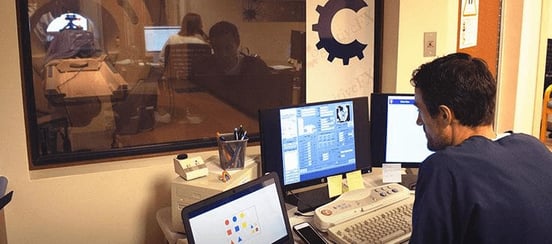 Functional neurocognitive imaging (fNCI) at Cognitive FX.
Functional neurocognitive imaging (fNCI) at Cognitive FX.
During acute concussion recovery, it’s important to get enough mental and physical stimulation without significantly worsening your symptoms. You can read all about how to heal from a concussion at home here.
Key components of acute concussion recovery include:
- Sub symptom threshold exercise (30 min/day as tolerated).
- Some exposure to cognitive activity (word games, reading, puzzles, etc.).
- Soothing activities (such as meditation, listening to calming music, etc.).
- Rest from screens, sports, and full-time school or work.
- Engaging in normal activities as tolerated, with a gradual resumption of your full schedule.
If you suffered a sports concussion, we have additional resources about physical, mental, and emotional recovery for you in this article.
If your symptoms don’t go away after three months, then you likely have post-concussion syndrome. While there is a chance that your symptoms will go away on their own, they will likely persist until you get the right treatment.
You can read more about what recovering from post-concussion syndrome looks like here. This article addresses diagnosis, what treatment is like, the emotional phases you may progress through during and after treatment, and common misconceptions about head injury.
On average, our patients make a 75% improvement in one week from their first brain scan to their second. And 95% of patients experience statistically verified restoration of brain function in that one week. Schedule a consultation to discuss your injury and treatment options with our team.
Severe Traumatic Brain Injury Recovery

A traumatic brain injury is brain trauma caused by an outside source. It can be categorized as mild (concussion), moderate, or severe. Shortly after your brain injury, a doctor will likely order an MRI, CT scan, or both to look at your brain structure to try to determine what is damaged and where.
A moderate TBI can involve bleeding, skull fracture, and loss of consciousness for less than 24 hours. While a moderate TBI can still cause brain damage, it is not usually a life-threatening injury and typically doesn’t require surgery.
A severe TBI may be life threatening and involves extended loss of consciousness or coma. If the brain tissue is bruised and bleeding (contusion), surgery might be needed to relieve pressure on the brain.
Recovery from a severe TBI happens in stages. Exactly how fast your recovery progresses and what you are able to do depends on a number of factors, including the location and extent of brain damage from the injury.
Severe Traumatic Brain Injury Recovery Stages
A severe TBI can be life-threatening: The very first step in the recovery process for some patients is to stay alive.
After stabilizing, the patient may be in a coma. Despite how it is depicted on TV, waking up from a coma isn’t instantaneous. It can take months for a patient to “emerge” from a coma fully.
One of our patients, Abigail Ward, spent weeks regaining consciousness after a 70 ft fall.
The patient might progress from a coma (no response to stimulation), to a so-called vegetative state (not conscious, but physical reaction to stimuli), to a minimally conscious or “confused” state before regaining full awareness of their situation. Doctors often use the Glasgow Coma Scale (GCS) to track a coma patient’s progress.
Once awake, severe TBI patients often need to relearn basic skills such as speech, walking, and activities of daily living, such as tying shoe laces and brushing their teeth. This process usually involves physical therapy and occupational therapy, either via inpatient medical care at a hospital or at an outpatient center, depending on the severity of their injuries.
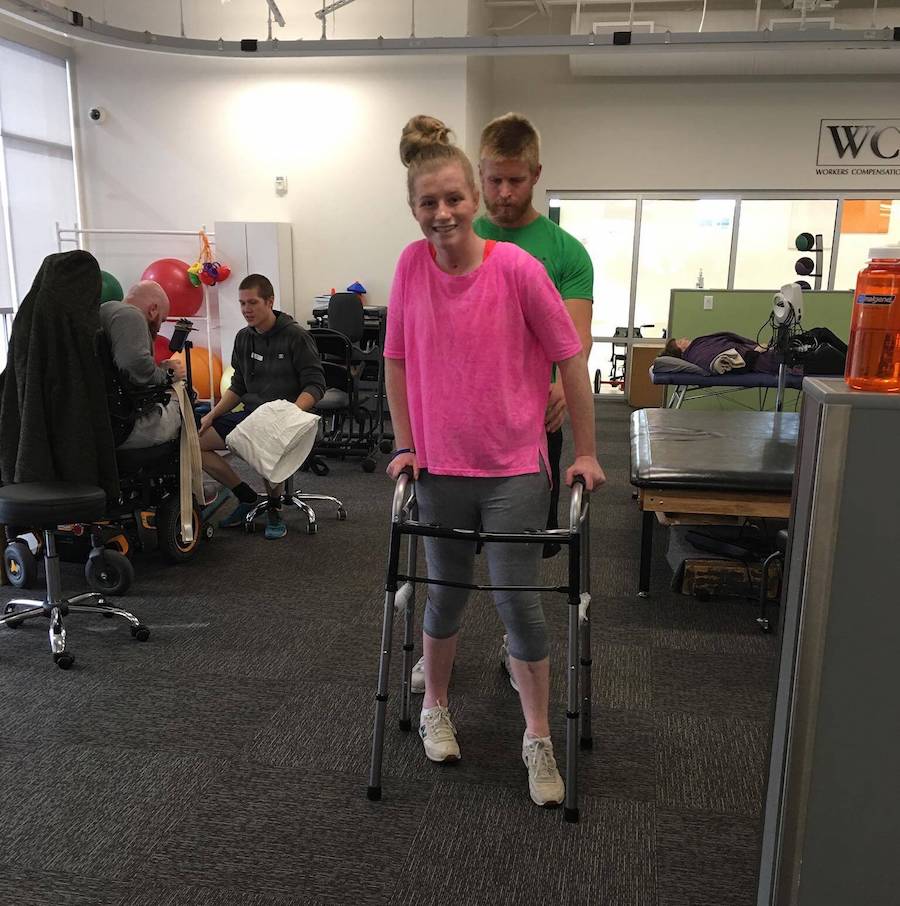
Abigail Ward in physical therapy after surviving a 70 ft fall.
A brain injured person may or may not regain the ability to complete those basic tasks without assistance. If they do, the next step is to return to school or work as they are able. Some patients are able to do so and others are not.
Many TBI survivors have long-lasting symptoms after head trauma. The location and severity of the injury impacts which are treatable. Brain cell death cannot be reversed. That said, the brain has an amazing ability (called neuroplasticity) to forge new pathways and compensate for injury.
You can learn more about the long term symptoms of TBI and what can be done for them here.
Severe Traumatic Brain Injury Recovery Time
Brain injury rehabilitation takes time. Early stages of recovery may feel excruciatingly slow, but that’s when most of the healing takes place.
Most doctors believe the most rapid recovery happens within the first one to two years. But that doesn’t mean you can’t keep recovering in the years that follow. Many patients continue to make progress with therapy.
Rarely does a patient experience 100% full recovery from a severe TBI. Instead, persistence with therapy, exercise, healthy sleep, eating habits, and emotional support will chip away at symptoms and improve your quality of life. The most important thing is not to give up on making progress.
Patients with a history of severe TBI may not make the quick recovery that many of our post-concussion patients experience, but they often make significant progress at our clinic. To discuss your injury and treatment options with us, schedule a consultation.
Can TBI Cause Permanent Brain Damage?
Yes — a severe TBI causes anywhere from minor to extensive brain damage, and once a brain cell is dead, we don’t have a way to fix it. However, the brain can build new pathways around damaged brain regions, so patients can keep improving — often beyond what doctors think is possible when they first assess the injury.
‘Non-Traumatic’ or Hypoxic Brain Injury Recovery
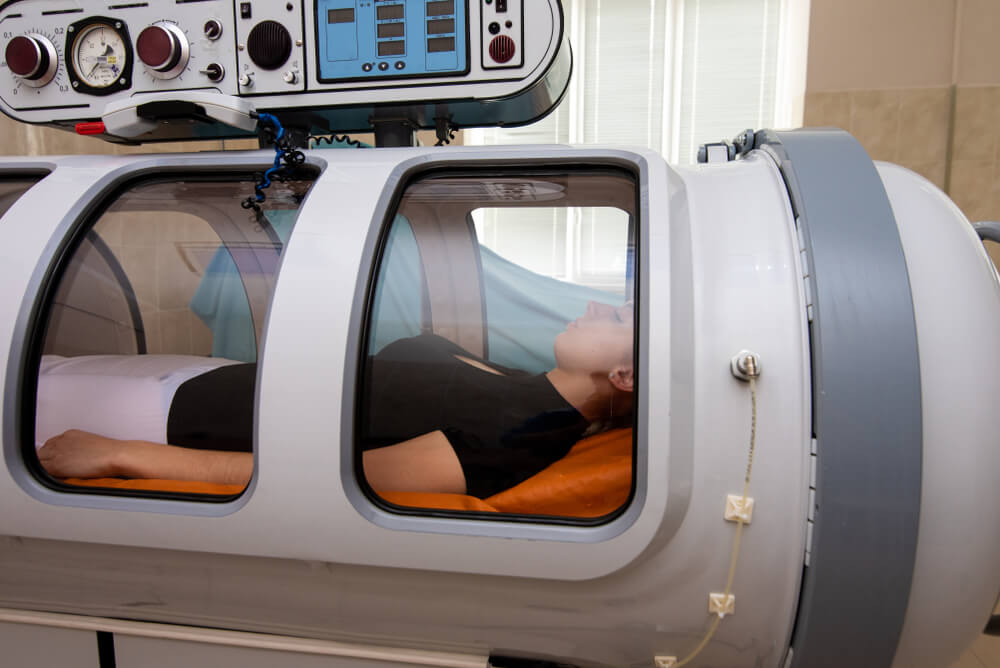
Whether it’s from a blood clot that blocked blood flow in your brain or a severe infection that resulted in brain swelling and inflammation (encephalopathy), there are many different ways to acquire a hypoxic brain injury. Many of these injuries can be classified as hypoxic or anoxic.
An anoxic brain injury involves complete deprivation of oxygen to the brain. It takes four minutes of deprivation for brain cells to die. Being rescued and resuscitated after drowning, for example, could result in an anoxic brain injury.
A hypoxic brain injury is more common. It results from the partial deprivation of oxygen to the brain. For example, a transient ischemic attack will block or slow blood flow only to specific parts of the brain. You might find that it damages your ability to store memories, but it doesn’t impact balance at all.
Patients can recover from both anoxic and hypoxic brain injuries, however anoxic brain injuries are often more debilitating. It all depends on how extensive the brain cell death is.
Hypoxic brain injuries are very similar to mild TBI because they both often result in neurovascular coupling (NVC) dysfunction (described above).
Anoxic and Hypoxic Brain Injury Recovery Time
Recovery time from a hypoxic brain injury varies significantly with the severity and location of the injury. The more severe the injury is, the less likely a full recovery is.
A milder anoxic or hypoxic injury has a better prognosis. Long-lasting symptoms are likely, so recovery may extend for years. Getting the right treatment can shorten that recovery time.
Take transient ischemic attack again. It is a mild brain injury and many hospitals expect full recovery within a week of the attack. But some patients experience symptoms that continue indefinitely. These symptoms can resolve with the right therapy.
Can a Hypoxic Brain Injury Cause Permanent Brain Damage?
Yes, both anoxic and hypoxic brain injury can cause permanent brain damage and cognitive impairment. Fortunately, the brain has an amazing ability to build new pathways and route around problem spots.
Because of that, many patients are less limited in recovery than they often believe or may be told. It’s important to keep working hard at therapy and do whatever regular activities you’re able to do so that your brain can keep recovering.
What to Expect During Hypoxic Brain Injury Recovery
Acute treatment of anoxic or hypoxic brain injury could involve a number of therapies depending on the cause of the injury. You might receive hyperbaric oxygen therapy to force more oxygen into the brain.
After the acute phase, recovery may or may not involve physical and cognitive therapies or medication. It all depends on whether you have lingering symptoms from the injury. If it was a severe injury, the recovery trajectory will likely be similar to a severe traumatic brain injury. If it was a mild injury, then it will likely be similar to concussion recovery.
On average, our patients make a 75% improvement in one week from their first brain scan to their follow up scan. And 95% of patients experience statistically verified restoration of brain function in that one week. Schedule a consultation to discuss your injury and treatment options with our team.
Treatment for Persistent Brain Injury Symptoms
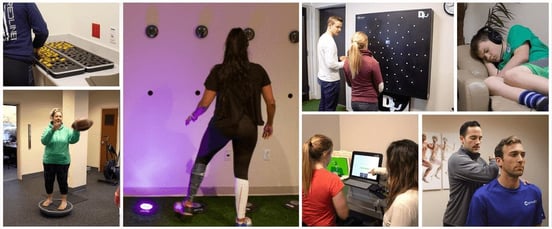
After any type of brain trauma, you may notice some of the following persistent symptoms:
|
|
|
|
|
|
- Car sickness or nausea with motion
|
|
- Change in (or loss of) taste, smell, or appetite
|
|
|
|
|
|
|
|
- Difficulty finding things
|
|
|
|
|
|
|
|
|
|
- Slowness to decide, think, speak, or act (difficulty with executive function)
|
|
|
|
|
|
|
- Feeling of pressure in the head
|
- Temporary loss of consciousness
|
|
|
|
|
|
- Tired for seemingly no reason
|
|
|
|
|
|
|
|
|
|
Treatment at Cognitive FX for persistent brain injury symptoms is tailored to the needs of each patient. An fNCI scan shows us which regions of your brain were affected in what way. We then prescribe a series of physical exercise and therapies to target those brain regions for recovery.
Here’s an example from the fNCI report for Olivia Seitz, a former figure skater who suffered for over a decade before getting treatment:
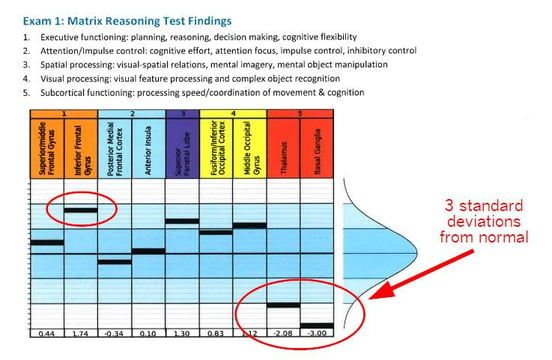
Olivia's explanation of the findings: “The fNCI showed that my thalamus was hypoactive and my basal ganglia was completely out to lunch. Three standard deviations from normal basically means that there was no activation seen in that area on the fMRI. All the work was being routed around it — causing fatigue and stress on the rest of my brain. The inferior frontal gyrus was trending toward hyperactive (using too many resources for given tasks).”
After the fNCI, it’s time to start treatment.
Every patient receives some combination of neuromuscular therapy, occupational therapy, cognitive therapy, sensorimotor therapy, Dynavision therapy, and more. Every patient has at least two sessions with our psychologist and has scheduled breaks to destimulate their brain while listening to Brainwaves in between sessions.
Here’s how one of our patients, Sam Pembleton, described what it’s like at therapy:
“The one I really noticed that I improved in throughout the week was the cognitive activities,” she recalled. “It was an hour-long therapy, and it was just one-on-one with someone. You’d do a cognitive activity, like sorting through a deck of cards, but at the same time someone would give you a four-letter sentence and you'd have to arrange it alphabetically while you were still sorting through the cards. It was a lot of multitasking!”
She’d been to many other concussion treatment clinics, but hadn’t experienced relief until her week at Cognitive FX because the other clinics didn’t take into account the unique aspects of her injury.
“I think the most difficult thing for people to grasp is the fact that, unlike a broken bone or something, a concussion is so different for everyone,” she said. “Each person’s brain is so different that one treatment may work for one person, whereas someone else may need a completely different approach. A concussion is like a fingerprint. It's unique for each person.”
At the end of treatment week, we confirm that your brain has made progress with a second fNCI scan. You can see the difference from the first to the second scan for Olivia (with her notes in red):
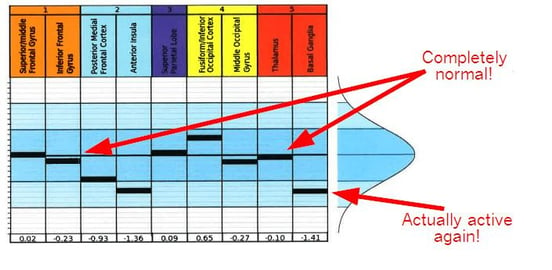
Most patients only need one week of treatment. Sometimes, severely injured patients stay for two weeks. Learn more about our program and what treatment involves here.
What You Can Do at Home
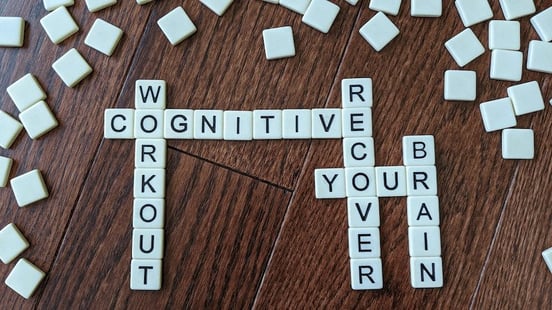
Here are a few more resources you can use during recovery at home:
New experiences are a driver of neuroplasticity, so learning new activities and hobbies can help as well.
Brain injury recovery is never one-size-fits-all. But there are many resources available to help you and your family to pursue recovery one day at a time.
95% of our patients experience statistically verified restoration of brain function after a week of treatment at our clinic. To learn if we can help you on your recovery journey, schedule a consultation call with our team.


